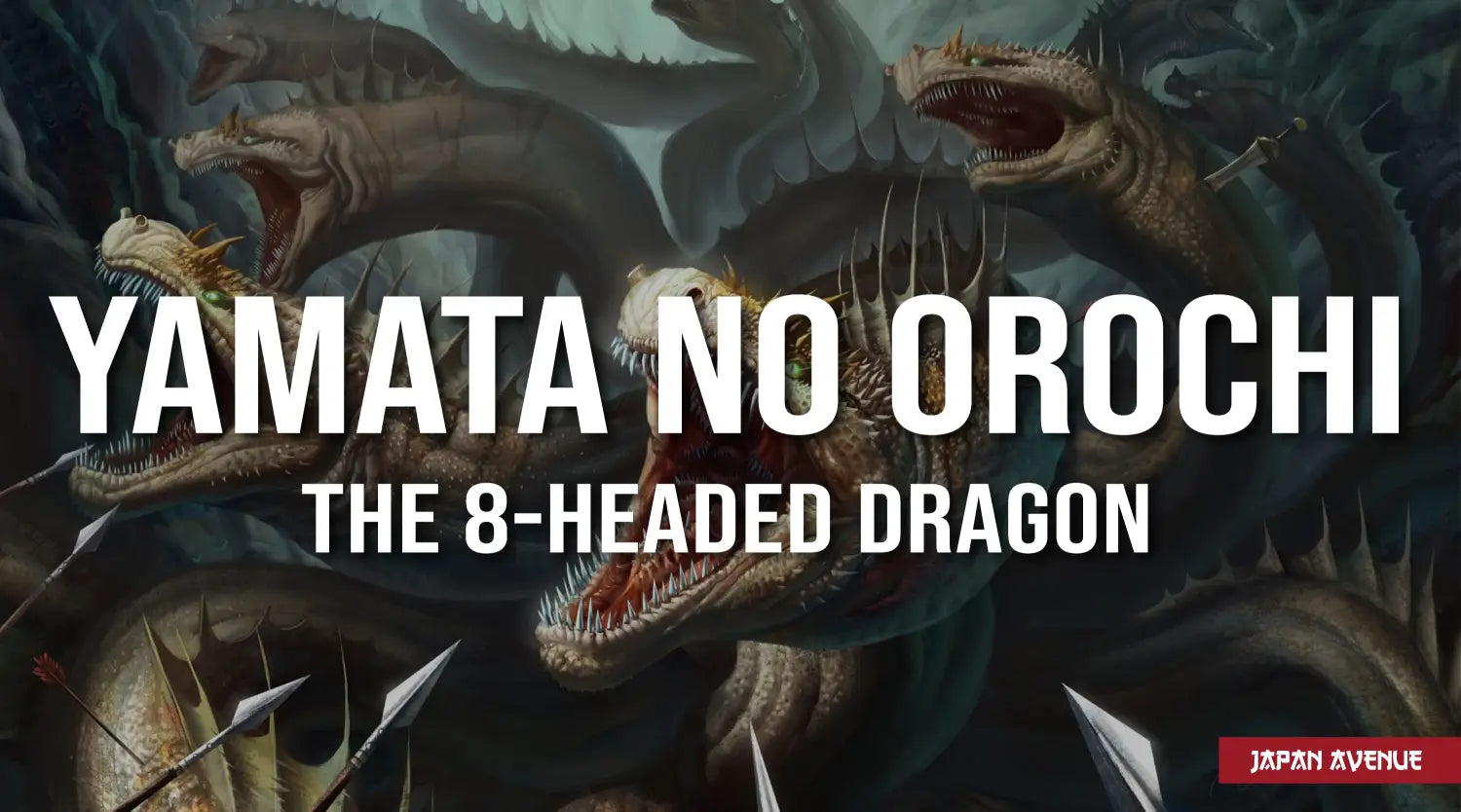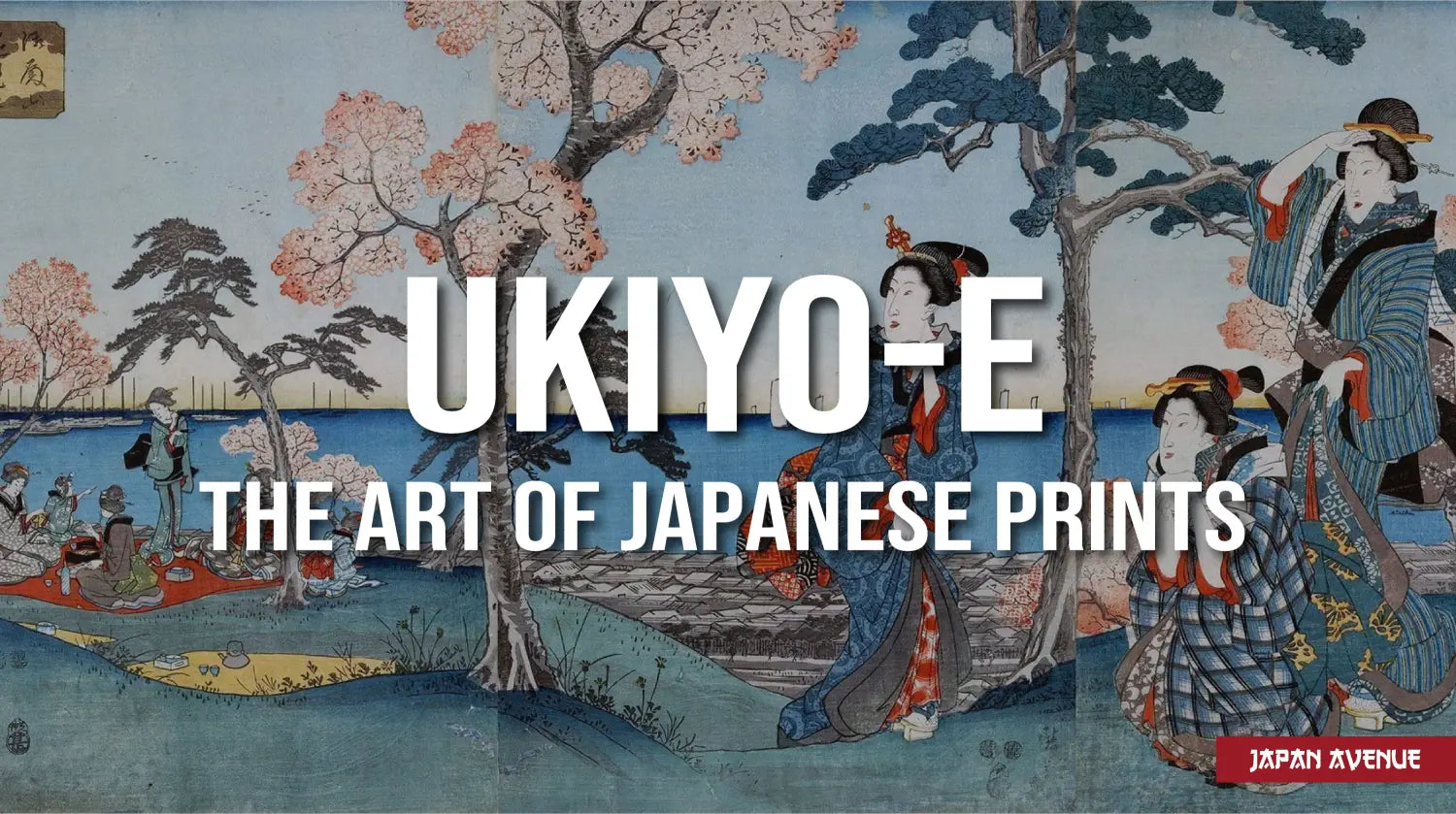Ever heard of Yamata no Orochi, the famous octocephalic dragon in the legend of Susanoo in Japanese mythology? This terrifying creature, defeated by the storm kami, has an important place in Japanese culture. Learn more about this monstrous dragon and the illustrious story of Susanoo and his magic sword.
🐉 Yamata no Orochi, portrait of a legendary monster
Mentioned in the Kojiki and the Nihon Shoki, two mythological collections recounting the history of Japan, Yamata no Orochi is not just an ordinary dragon. Asian dragons are considered benevolent creatures that bring courage, wisdom and protection. However, this is not the case for Yamata no Orochi!

Yamata no Orochi representation by Maukamauka on deviantart.com
😈 A creature from hell
With no less than eight heads and eight tails, this ferocious monster represents chaos. Each of its heads symbolizes a natural element such as fire, water, earth, wind, lightning, poison, light and darkness.
The giant size of this creature spreads out over eight mountains and eight valleys. 😲 Its body resembles that of a snake and its smoldering skin is covered with forests interspersed with bloody rivers.
In addition to his terrifying appearance and poisonous breath, his red eyes give him a frightening look. It is also said that Yamata no Orochi carries a bell that rings as he moves. Located in the Koshi province, not far from the Hi river, the polycephalic dragon has the habit of eating young Japanese women every year.

Representation of the Japanese eight-headed dragon.
🔎 Symbolism of Yamata no Orochi
We may think that this mythological figure actually is an allegory of the enemy that prowls the valleys, ready to attack the weak and destroy everything in its path. In fact, the ancients used to demonize rival tribes by associating them with mythical creatures. The devoured young women being the representation of human sacrifices and the Kusanagi sword symbolizing power or peace after the battle.
🌪 The legend of Susanoo
In Shintoism, Susanoo, the kami of storms and the sea, was a temperamental deity who handled the sword to perfection. It is said that he was born out of the nose of Izanagi, the creator of the world who also gave birth to the sun goddess Amaterasu and the moon god Tsukuyomi. All three of them were supposed to rule their own kingdoms, but, unlike his siblings, Susanoo refused his mission and had only one obsession, that of finding his mother Izanami.

Susanoo, god of storms and the sea, against the eight-headed dragon (illustration by Yama Orce).
😠 A kami repudiated by his fellows
Exasperated by his son's immature behavior, the god Izanagi banished Susanoo from the High Plain of Paradise. It was then that Susanoo, overwhelmed by the sadness of not finding his mother, and jealous of Amaterasu, decided to challenge his sister with a competition. Each of them had to create as many kami as possible.
Susanoo won this confrontation and attacked the celestial kingdom, destroying the rice fields and polluting the domain with excrement 💩. Frightened, the sun goddess took refuge in a cave, making the sunlight disappear.
That was too much for the kami! Following this incident, which provoked anger in the kingdom of the Gods, Susanoo was banished from Heaven.
⚔ The fight of Susanoo vs. Yamata no Orochi
After being exiled to the cursed land, Susanoo went to the province of Izumo. On his way, he met a crying couple. Their eighth and last daughter was about to be fed to a horrible creature named Yamata no Oroshi, the famous 8-headed dragon. Susanoo promised the family to save the beautiful Kushinada from the monster's clutches in exchange for her hand. Then, once the deal was done, he made a plan with all of the villagers.
 On the left, Susanoo meeting Kushinada's grieving parents (illustration by Jurithedreamer). On the right, representation of Yamata no Orochi by Matthew Meyer.
On the left, Susanoo meeting Kushinada's grieving parents (illustration by Jurithedreamer). On the right, representation of Yamata no Orochi by Matthew Meyer.
And so, in order to counter his enemy, the storm kami built a large palisade with eight openings and placed eight barrels of strong sake inside. Hearing the frightening cries of the approaching dragon, all the inhabitants fled, leaving Susanoo alone with his bride. Then, the kami transformed his beauty into a comb 🤔🤷 before going to hide in a cart.
When he got there, the dragon Yamata no Orochi smelled the delicious scent of sake. Believing that everything was quiet, he couldn't resist this irresistible drink and soon dipped his heads into it. That's when Susanoo threw himself on the monster, brandishing his sword. Completely drunk, the latter could not face the fierce fight of the kami who cut his eight heads as well as his eight tails.
👉 Moral of this story: Be careful with Sake! 🙃
 Illustration of the fight between Susanoo and Yamata-no-Orochi by Chikanobu Toyohara (year 1870).
Illustration of the fight between Susanoo and Yamata-no-Orochi by Chikanobu Toyohara (year 1870).
Inside of Yamata no Orochi, Susanoo found a sword named Ama no murakumo no tsurugi, better known as Kusanagi. Furthermore, legend has it that the weapon was able to gather clouds. This treasure would become a symbol of imperial dynasty in Japan.
👑 From exile to glory
To apologize, the storm and sea deity offered his precious treasure to the goddess Amaterasu, which marked their reconciliation. Susanoo became a highly respected deity in the province of Izumo. And, as all's well that ends well, he married the beautiful Kushinada and built a magnificent palace. Their union gave birth to many children at the origin of the dynasty of Izumo. The god also took the reins of his kingdom and governed the Earth while sowing natural resources thanks to his hair. Thus Susanoo became the god of fertility.
Nowadays, he is worshipped at the shrines of Yaegaki Jinja and Yasaka Jinja in Shimane Prefecture where many couples attend to make their marriage successful. Note that Susanoo is also related to the god of Plague, named Gosu Tenno.
🗡 Kusanagi, the sacred sword of Japanese emperors
One of the 3 imperial treasures of Japan is derived from the myth of Yamata no Orichi. Used during the coronation ceremony of the emperor, the Kusanagi sword is handed down from generation to generation. The object represents the right to rule for the newly crowned ruler as well as his kinship with the divine.
 Kusanagi sword, one of the three imperial treasures of Japan.
Kusanagi sword, one of the three imperial treasures of Japan.
The sacred sword provides the protection of the kami to the one who owns it. In the past, it was used by Prince Yamato Takeru to defeat his enemies. Later, the sacred treasure disappeared with the arrival of the Shogunate. It is said that Emperor Antoku carried it into the sea when he was defeated by the Minamoto clan. It was only during the Meiji restoration that the Kusanagi reappeared in order to officialize the ascension to the throne of the emperor.
A short story... It is said that Amaterasu gave the Kusanagi to her grandson Ninigi before he came to reign on Earth. This direct ancestor of Japan's first legendary emperor eternally linked the imperial family with the gods.
🐲 The popularity of Yamata no Orochi in Japan
In Japan, the dragon is omnipresent. If you happen to visit the archipelago, you will probably encounter many representations of this legendary creature, whether in Shinto shrines or Buddhist temples.
Yamata no Orochi is deeply rooted in the Japanese culture as it is present in the legends of the Land of the Rising Sun and its imperial history. Here again, the Kabuki theater took inspiration from this mythological creature as can be seen in the prints of Utagawa Kuniteru. Moreover, the famous dragon is used in many artworks such as those of the famous Utagawa Kuniyoshi.
 Appearance of Yamata No Orochi in the anime Gegege no Kitarou.
Appearance of Yamata No Orochi in the anime Gegege no Kitarou.
It is thus not surprising to regularly see its appearance in the pop culture, especially in mangas and video games. In Naruto, there are many references to Yamata no Orochi. It's up to you to find them. 😜 You can also spot the famous 8-headed dragon in the manga Kannazuki no Miko or even face this terrible creature in the game Nioh.
Yamata no Orochi is undoubtedly one of the fiercest dragons in Japanese mythology. Gigantic and terrifying at the same time, this octocephalic monster, defeated by the god Susanoo, has left its mark on Japanese history.



